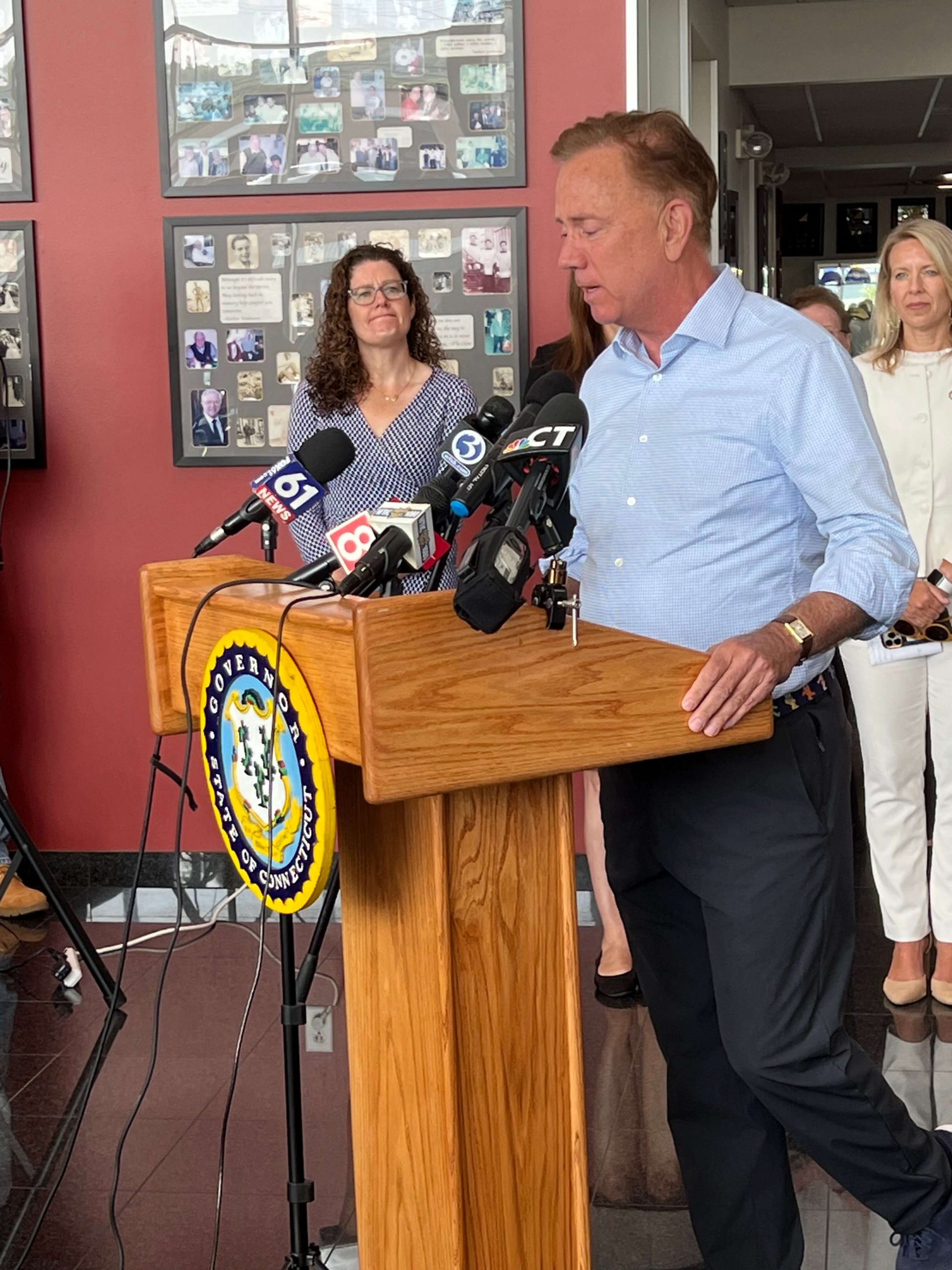Governor Lamont And DEEP Host Press Conference To Announce CT Formally Adopting New Regs
This was not your typical press conference. It wasn’t a ribbon cutting for a new bridge, or better yet, for a new bank of DCFC charging stations funded by the NEVI (infrastructure) bill. It was about a wonky, weedy policy known as the California Air Resources Board Advanced Clean Car 2 regulations (ACC II). The Department of Energy and Environmental Protection (DEEP) was responsible for shepherding the process of CT adopting these (as directed by the legislature). As complicated as the regulations may be, they can be simply summarized: more stringent fuel-efficiency standards culminating with 100% of light duty vehicles sold being zero emission or low-emission by 2035. The new regulations also now cover medium and heavy-duty vehicles (MHD), and according to Commissioner Dykes of DEEP, diesel emissions will be reduced by 90%.
The other good thing about this is the agglomeration of states. This was noted in the press event but, perhaps, not with enough emphasis. Just as with the first set of CARB regulations, when you have California, New York, Massachusetts, Connecticut, and a number of other states, that ends up being 40% or more of the new vehicle market and it becomes a de facto national standard. Commissioner Dykes pointed out that air blowing into CT from the west is already “out of compliance.” States like Ohio or Indiana that will not be part of this alliance, nonetheless will be getting cleaner vehicles.
Left to itself, industry, at least this industry, will not move fast enough to mitigate transportation sector emissions, the effects of which are already being felt. It is imperative to have policy that both pushes the industry to move faster as well as giving it the certainty it needs to plan. The first set of CARB regulations led to air quality improvements but it didn’t address medium and heavy duty vehicles and it is now out of date. Adoption of ACC2 is an unambiguous win.
According to the League of Conservation Voters, adopting the California standards will reduce smog and air pollution by over 750 tons per year in 2035 and over 900 tons per year by 2050, and yield as much as $1.4 billion in avoided healthcare costs between now and 2050.
There is a public comment period that is open until August 23rd, 5 PM. Comments may be sent to deep.mobilesources@ct.gov.
CT EV Registrations pass 36,000
Commissioner Dykes said the number represents a 20% increase since January and 42% year on year. Not to put too fine a point on it, but we need more. The state hopes to have 500,000 by 2030. EV sales are climbing nationally and more models are being introduced all the time, but growth needs to turn sharply upward.
We do not yet have the underlying detail of these registrations.
NEVI (National Electric Vehicle Infrastructure) Update
Connecticut will have north of $50 million to spend on EV infrastructure courtesy of the Federal Infrastructure Bill. We’ve been anxiously awaiting news about when we will see actual results. The first phase of NEVI is to be devoted to building out fast chargers along major highway corridors. According to the newly appointed Deputy Commissioner of the Department of Transportation, Karen Kitsis, the rule-making is expected to be complete by the end of this year with shovels in the ground in 2024.
E-Bike Rebates Explode
The CT state EV rebate program, CHEAPR, recently added an e-bike incentive. It blew through its entire budget allotment, supporting over 6,000 rebates, within 13 minutes of its going live.


1 thought on “Connecticut Formally Proposes To Adopt Advanced Clean Cars 2 Rules”
Comments are closed.